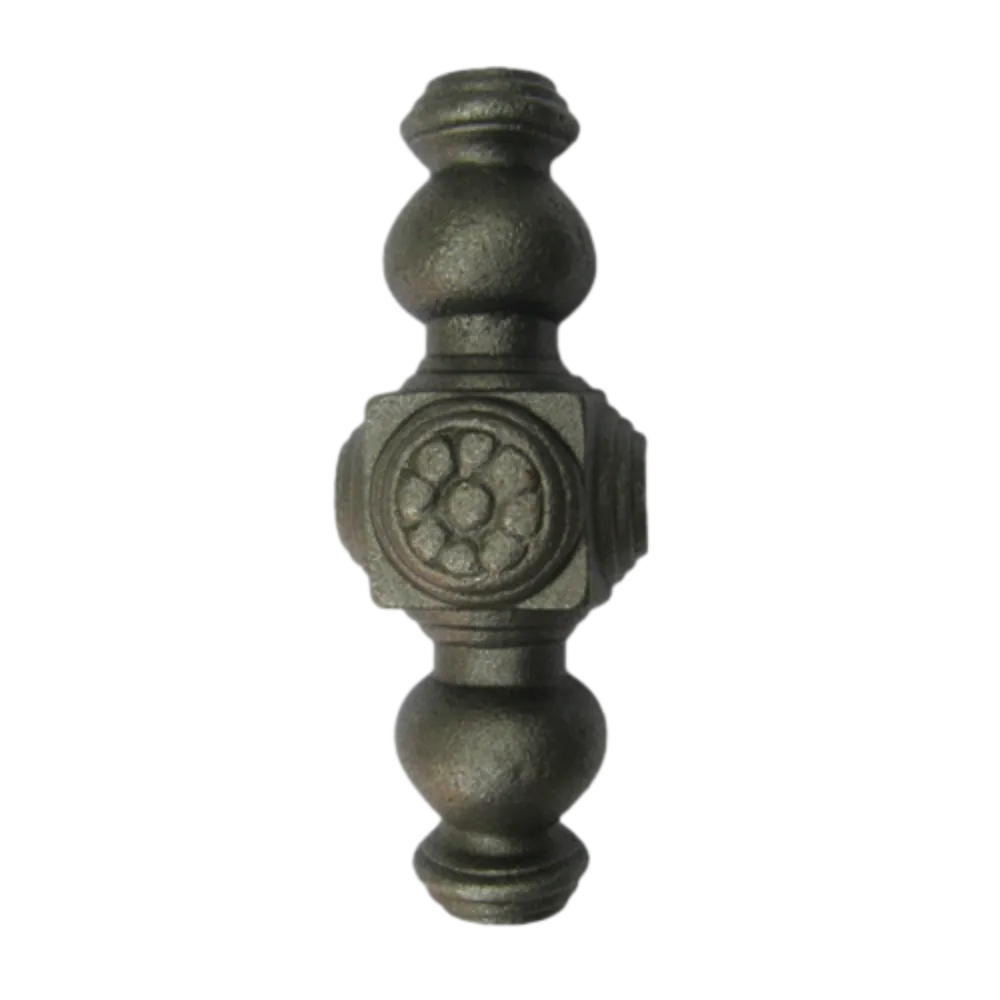Exploring the Elegance of Ornamental Cast Iron in Architecture and Design
The Art and Craft of Ornamental Cast Iron
Ornamental cast iron has long been a staple in architecture and design, showcasing the intersection of artistry and engineering. This versatile material has graced both public spaces and private homes, becoming a hallmark of style and elegance. From lampposts and gates to intricate railings and decorative facades, ornamental cast iron has transformed ordinary structures into magnificent works of art.
The Historical Context
The use of cast iron dates back to the early 18th century, gaining prominence during the Industrial Revolution. With advancements in manufacturing techniques, cast iron became a favored material for architects and designers seeking to create intricate designs that were both durable and malleable. The ability to cast metal into intricate shapes enabled artisans to craft detailed patterns that were previously unimaginable with solid materials.
Notably, the Crystal Palace, built for the Great Exhibition of 1851 in London, showcased the potential of cast iron in grand architectural designs. Its extensive use of glass and iron emphasized not only the material's strength but also its capacity for aesthetic beauty. The combination of form and function set a precedent for future structures, leading to a flourishing of decorative applications across Europe and the United States.
Design Features
One of the most captivating aspects of ornamental cast iron is the ability to create elaborate designs that appeal to the eye. Patterns often draw inspiration from nature, featuring floral motifs, vines, and geometric shapes. The craftsmanship involved in creating these designs is remarkable; artisans painstakingly produce molds and sometimes hand-finish delicate elements to ensure that each piece is unique.
Moreover, the adaptability of cast iron allows for customization, making it possible to realize specific artistic visions for gates, railings, and other architectural elements. The material can withstand various weather conditions and resist rust, ensuring that these decorative pieces remain beautiful and functional for decades, if not centuries.
ornamental cast iron

Applications in Modern Design
Even in contemporary design, ornamental cast iron has found its place, marrying traditional aesthetics with modern functionality. Urban planners and architects often incorporate decorative cast iron elements into cityscapes, using them for street furniture, benches, and bicycle racks. These pieces not only serve practical purposes but also enhance public spaces, making them more inviting and visually appealing.
In residential settings, homeowners have re-embraced ornamental cast iron for balconies, garden gates, and fencing. The charm of wrought iron designs adds character and sophistication to a home. Additionally, cast iron is often preserved or restored in historic renovations, contributing to the authenticity and beauty of restored neighborhoods or landmarks.
Challenges in Restoration and Preservation
Despite its durability, ornamental cast iron requires maintenance to prevent deterioration from environmental factors. Rust and corrosion can be significant issues, especially in areas with high humidity or near saltwater. Proper care, such as periodic cleaning and repainting, is essential in preserving the integrity and beauty of cast iron pieces.
Restoration projects also present challenges, particularly when original designs are needed but may have been altered or damaged over time. Skilled craftsmen must often reproduce intricate details to maintain the historical accuracy of the pieces while ensuring that they adhere to modern safety standards.
Conclusion
Ornamental cast iron represents a fascinating blend of elegance and durability, embodying a rich tradition of craftsmanship that continues to inspire designers and architects today. Its historical importance, aesthetic versatility, and timeless charm allow it to transcend time periods and styles, making it a cherished material in both old and new constructions. As we move forward, the enduring legacy of ornamental cast iron ensures that its beauty will continue to enhance our built environment, reminding us of the artistry and ingenuity of those who came before us. Whether seen in a majestic public square or an intimate garden, ornamental cast iron stands as a testament to the lasting power of design.
-
Wrought Iron Components: Timeless Elegance and Structural StrengthNewsJul.28,2025
-
Window Hardware Essentials: Rollers, Handles, and Locking SolutionsNewsJul.28,2025
-
Small Agricultural Processing Machines: Corn Threshers, Cassava Chippers, Grain Peelers & Chaff CuttersNewsJul.28,2025
-
Sliding Rollers: Smooth, Silent, and Built to LastNewsJul.28,2025
-
Cast Iron Stoves: Timeless Heating with Modern EfficiencyNewsJul.28,2025
-
Cast Iron Pipe and Fitting: Durable, Fire-Resistant Solutions for Plumbing and DrainageNewsJul.28,2025
-
 Wrought Iron Components: Timeless Elegance and Structural StrengthJul-28-2025Wrought Iron Components: Timeless Elegance and Structural Strength
Wrought Iron Components: Timeless Elegance and Structural StrengthJul-28-2025Wrought Iron Components: Timeless Elegance and Structural Strength -
 Window Hardware Essentials: Rollers, Handles, and Locking SolutionsJul-28-2025Window Hardware Essentials: Rollers, Handles, and Locking Solutions
Window Hardware Essentials: Rollers, Handles, and Locking SolutionsJul-28-2025Window Hardware Essentials: Rollers, Handles, and Locking Solutions -
 Small Agricultural Processing Machines: Corn Threshers, Cassava Chippers, Grain Peelers & Chaff CuttersJul-28-2025Small Agricultural Processing Machines: Corn Threshers, Cassava Chippers, Grain Peelers & Chaff Cutters
Small Agricultural Processing Machines: Corn Threshers, Cassava Chippers, Grain Peelers & Chaff CuttersJul-28-2025Small Agricultural Processing Machines: Corn Threshers, Cassava Chippers, Grain Peelers & Chaff Cutters












